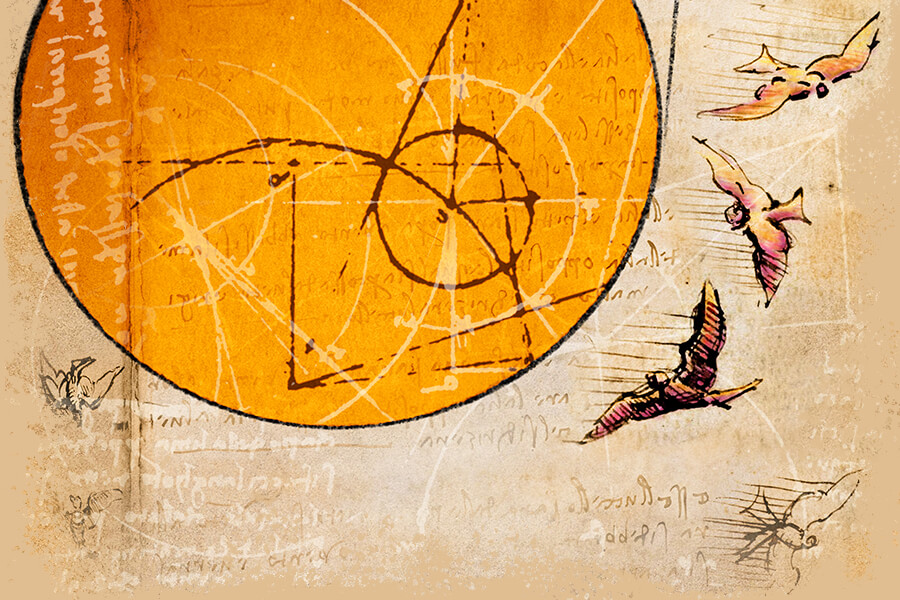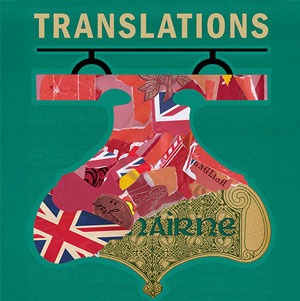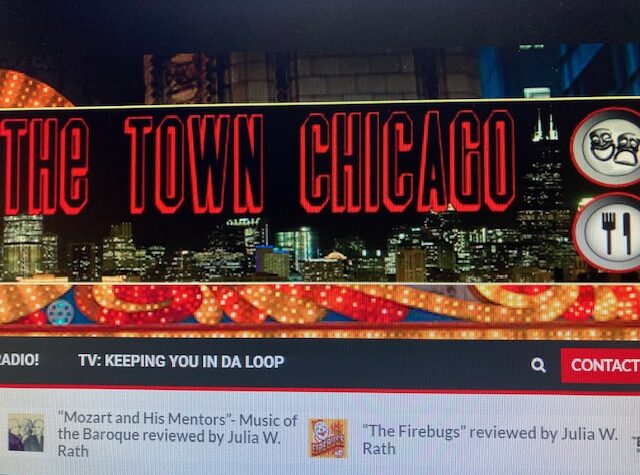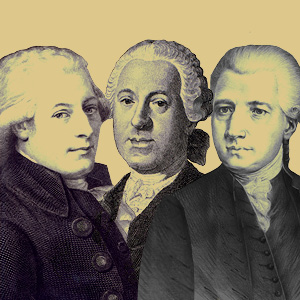
 [rating=2]Despite its promising title, “The Notebooks of Leonardo da Vinci” did not live up to my expectations. It doesn’t tell a story: at least not in the conventional sense of having a beginning, an ending, and a dramatic climax. There is no character development and no plot. Instead the show takes a lot of the diagrams, explanations, and illustrations from Leonardo’s notebooks and transforms them from the second dimension (that is, from paper) into the third dimension via the movements of live actors on stage. As we move from one set of writings to another through a series of recitations, the eight main characters—all named “Leonardo”—visually demonstrate his observations, principles, analyses, and reflections, on topics as diverse as painting and sculpture, architecture, anatomy, physics, engineering, and so on. Although we can make out the natural and scientific principles that Leonardo writes about, a major problem with this show is that too much is being thrown at the audience at once. When we don’t have enough time to absorb the material and reflect on it, and we lose its philosophical underpinnings. And in as little as a half-hour’s time, we get the distinct impression that we should have read something about Leonardo’s notebooks before walking into the theatre. Not having done so makes much of this show seem pointless and tiresome. We are not going to remember it all anyway.
[rating=2]Despite its promising title, “The Notebooks of Leonardo da Vinci” did not live up to my expectations. It doesn’t tell a story: at least not in the conventional sense of having a beginning, an ending, and a dramatic climax. There is no character development and no plot. Instead the show takes a lot of the diagrams, explanations, and illustrations from Leonardo’s notebooks and transforms them from the second dimension (that is, from paper) into the third dimension via the movements of live actors on stage. As we move from one set of writings to another through a series of recitations, the eight main characters—all named “Leonardo”—visually demonstrate his observations, principles, analyses, and reflections, on topics as diverse as painting and sculpture, architecture, anatomy, physics, engineering, and so on. Although we can make out the natural and scientific principles that Leonardo writes about, a major problem with this show is that too much is being thrown at the audience at once. When we don’t have enough time to absorb the material and reflect on it, and we lose its philosophical underpinnings. And in as little as a half-hour’s time, we get the distinct impression that we should have read something about Leonardo’s notebooks before walking into the theatre. Not having done so makes much of this show seem pointless and tiresome. We are not going to remember it all anyway.
The performance is at its best when principles from the notebooks are demonstrated with humor, especially through sexually-tinged body language. However, except for sudden bits of laughter in response to the physical comedy, the audience remains at a distance from the actors; it elicits no emotional stirrings. The only exception comes at the very beginning and very end of show when the falcon comes to Leonardo and opens her beak to nurture him. She puts her tail in his mouth and provides him with the curiosity and the drive to capture his environment in infinite detail. This mythological tale could account for Leonardo’s preoccupation with birds and wings and the nature of flight, and I really enjoyed seeing the contraption of the huge wooden bird worn by one of the actors to portray the falcon. But except for this small glimpse into the character of Leonardo behind the mechanics, the rest of the show is pretty bland. We see virtually nothing about the man behind the words. We learn nothing about him as a person, except that he was a keen observer of his surroundings and that his process of thinking was unique. We see nothing about how other people might have inspired him—or might have been inspired by him. We are not given any opportunity to sympathize or empathize with his life or his life situation. We don’t really see him as a person, as he interacts with others only in the most superficial of ways.
What makes the show even more nebulous is that the character of Leonardo is scattered into eight different actors: Adeoye, Christiana Clark, Christopher Donahue, Kasey Foster, Cruz Gonzalez-Cadel, John Gregorio, Anthony Irons, and Wai Yim. While the decision to split up the man into various components is not a terrible idea, there are far too many Leonardos. This leads to an even more significant and related problem: that there are a good number of incidental characters (mostly unnamed females) who interact with Leonardo to provide demonstrations. Although these female characters are all called “Leonardo”, they don’t have the same presence and forcefulness as the male characters who portray him. To put this another way, the women do not play Leonardo in the same way as the men do. This is reflected in Mara Blumenfeld’s costume design. Although the period garments are well-executed, the choice of costume with regard to gender is troublesome. Since both men and women have been cast as Leonardo, then all the actors regardless of gender should be dressed identically or in remarkably similar costumes. Instead, all the men are dressed the same, that is, in a white doublet, while all the women are dressed in traditional female costumes of that era. Whatever the reasoning for all of this falls flat.
Another failing is the total lack of projection design. Projecting slides of Leonardo’s notebooks onto a screen would have helped explain a lot of his writings and drawings to the audience, such as his original illustrations of the relationship between parts of the body to each other. Other images could have been set into motion via video, such as the movement of his helicopter-like flying machine or the flight of his hot air balloon. But as things stand now, we in the audience are either reliant on our own memories of these various aspects of his work, or perhaps more likely, we do not have any prior frame of reference. Showing slides taken from the notebooks side-by-side with the actors’ physical re-creations of this material would have added to the audience’s delight.
Finally, the inclusion of high bars and grab bars into an account of a 16th century man and his 16th century worldview is highly unusual—and although I understand the thinking behind it, adding these modern elements of stagecraft is ironically not essential to buttress the acrobatic feats within the performance. That being said, Scott Bradley’s scenic design is quite good. The background of Turin (akin to the background for the Mona Lisa) is great; the idea of depicting a 16th century workshop with wooden walls full of cabinetry is clever; and the addition of some outdoor elements from time to time gives each of the scenes a nice touch.
While watching this production might inspire us to take a closer look at Leonardo’s writings for ourselves, I felt that the project of relating his notebooks writ large seems dubious, since the audience is never really drawn into the character of Leonardo. Reciting his encyclopedic works on stage does not necessarily lend itself to curiosity on our part; it does lend itself to boredom. When ninety-nine percent of the performance is devoted to showcasing Leonardo’s logic, this enervates Leonardo the man, and we lose sight of the real live human being who once walked the earth. I would have liked to have seen his conflicts with the Church of his era and his rivalry with Michelangelo and learn something about the political and social context of his writings. He wrote in mirror handwriting; he was left-handed; there were hints that he might have been gay; none of this is mentioned in the show. I wanted to know something more about his personality, his family, his friends, and his acquaintances, and their impact on his work. If you see the show for yourself, you’ll see exactly what I mean—or maybe you’ll have a different opinion.
“The Notebooks of Leonardo da Vinci”, adapted and directed by Mary Zimmerman, is playing at the Goodman Theatre, 170 N Dearborn St, Chicago, through March 20, 2022.
Tickets start at $15 or $20, depending on the time and date of the performance.
 Performance schedule:
Performance schedule:
Tuesdays and Wednesdays – 7:30 p.m.
Thursdays – 2:00 p.m. and 7:30 p.m.
Fridays – 8:00 p.m.
Saturdays – 2:00 p.m. and 8:00 p.m.
Sundays – 2:00 p.m.
American Sign Language Performance – Friday, March 11th, 8:00 p.m.
Audio Described Performance – Saturday, March 12th, 2:00 p.m.
Spanish Subtitled Performance – Friday, March 18th, 8:00 p.m.
Open Captioned Performance – Saturday, March 19th, 2:00 p.m.
To purchase tickets, visit: https://www.goodmantheatre.org/Notebooks.
Both in-person and streaming online performances are available. Contact the box office for more information by calling 312-443-3800 (12 noon – 5:00 p.m. daily).
For group tickets of 10+, please go to Groups@goodmantheatre.org or call the box office at 312-443-3800.
For general information about the Goodman Theatre and to learn about future offerings, visit: https://www.goodmantheatre.org/.
In compliance with the City of Chicago vaccine requirement, proof of vaccination with an FDA or WHO-authorized vaccine is required for all guests. Masks are required at all times in the theater and patrons under 5 are not permitted. The Goodman Theatre is a member of the League of Chicago Theatres, and even though the State mask mandate is being dropped on February 28, 2022, masking in Chicago theatres is still being required. Learn more at https://www.goodmantheatre.org/Protocols.
To see what others are saying, visit www.theatreinchicago.com, go to Review Round-Up and click at ” The Notebooks of Leonardo da Vinci”.






More Stories
“Translations”
“The Firebugs” reviewed by Julia W. Rath
“The Book of Grace” Al Bresloff with another from Paul LIsnek